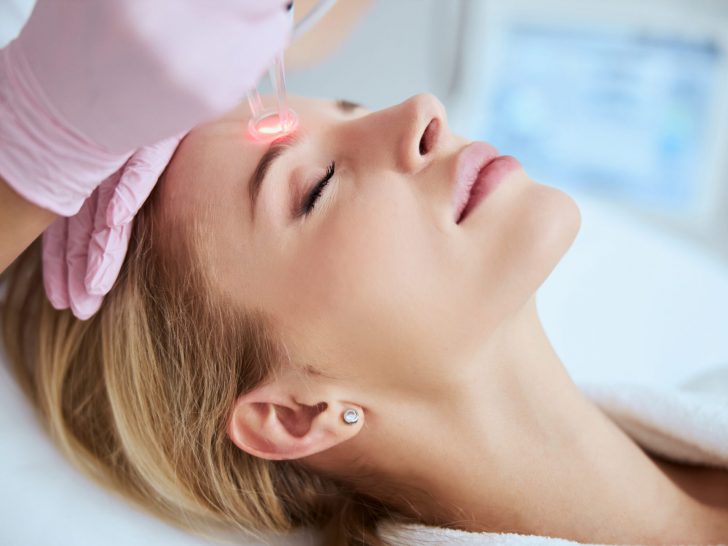Choosing between the multiple available cosmetic treatments can be challenging. There’s an abundance of procedures advertised for people who are dealing with ageing signs and want to look young again. Not only can these treatments improve the look and feel of the skin, but they will also give the patient a confidence boost.
Skin rejuvenation and skin resurfacing are two terms that may often pop up for people looking to improve the condition of their skin. Although the two terms are often used to refer to the same procedure, they have a slight difference.
Let’s look into skin rejuvenation and resurfacing, analyse what makes the two terms different and how the treatments can help people with certain skin conditions.
What Is Skin Rejuvenation and Resurfacing?
Skin rejuvenation refers to any procedure used to improve the look of your skin. It includes multiple types of treatments that help restore damaged skin. People can experience skin damage for many reasons. It could be due to getting older or as a result of sun exposure.
Skin rejuvenation often involves injectable products, such as Juvederm, Restylane, and Botox. Of course, there are many other dermal fillers available for individuals who want to make their skin look and feel better.
Nonsurgical treatments can also be used for skin rejuvenation too. These include skin tightening treatments like Ulthera and Venus Legacy.
Skin resurfacing is a particular type of rejuvenation treatment that involves removing debris and skin cell build-ups – therefore, boosting the natural desquamation process of the skin.
Over time, the condition of the skin changes. Ageing, skin disorders, and the sun can all lead to various skin issues and irregularities, which not only affect the look of the skin but also make the individual lose confidence.
The most common problems that people deal with include visible blood vessels, sunspots, freckles, and other pigmentation changes, but also acne scars and wrinkles. The skin may also end up feeling less firm and will lose tone.
Skin rejuvenation and resurfacing treatments can help combat these problems. Mechanical resurfacing, injectable treatments, laser resurfacing and chemical peels can all be used to improve the skin’s appearance. The wrinkles and fine lines can become smoother, while scars and other conditions will improve in appearance.
The treatment that a person should use to treat their skin condition will be determined during a consultation. It’s crucial to visit a board-certified plastic surgeon to address all concerns. Sometimes, one will have to go to multiple treatments or sessions to get rid of their problem skin areas effectively.
What Problems Can Skin Rejuvenation and Resurfacing Treat?
People are different, therefore their skin conditions will not be the same. Everyone is dealing with their own skin issues and will require certain treatments to improve the overall look and feel of their skin.
Some of the problems that skin rejuvenation and resurfacing can treat include:
- Pigmentation – This includes anything like sunspots, freckles, and other patches of skin that darkened as a result of sun exposure.
- Dynamic Wrinkles – They are expression lines that look like folds when the skin isn’t moving, but then get worse when the person makes certain facial expressions or movements
- Static Wrinkles – They can be seen all the time and don’t change when the individual makes facial movements and expressions.
- Dull Skin – It is skin that has a dead skin cell build-up and clogged pores, therefore it does not look vibrant anymore.
- Skin Tone Loss – This is what happens when the supportive skin structures like elastin and collagen weaken. The skin loses firmness, and cellulite may form as well.
- Vascular Problems – They involve conditions where blood vessels can be seen on the skin’s surface, as well as vascular lesions that look like small blisters filled with blood. Constant facial redness or flush can also appear.
- Scars – Scarring can appear as a result of an injury or acne.
Examples of Skin Rejuvenation and Resurfacing Treatments
Here are some of the most common treatments for skin resurfacing and rejuvenation:
- Dermal Fillers – Injectable treatments that can help with skin contouring.
- Mechanical Ablation (Dermaplaning, Dermabrasion) – They are surgical scraping methods that can make the irregularities on the skin surface softer.
- Chemical Peels – Acid peels that can get rid of the damaged outer skin layers when used in various combinations.
- Spider Vein Treatments (Sclerotherapy) – Injections that can help collapse the veins on the skin’s surface.
- Botulinum Toxin Type A Treatments – They can relax wrinkles by blocking nerve contraction.
- Non-Ablative Treatments (Microneedling, Microdermabrasion, Light Acid Peels) – These are minimally invasive treatments that can take care of discolorations and light scarring.
- Ablative Laser Treatments (Fractional CO2 Lasers) – They can smooth wrinkles and fine lines by removing outer skin layers.
- Laser and Intense Pulse Light (IPL) Treatments – They have the power to tighten sagging skin or remove skin discoloration.
Final Thoughts
Skin rejuvenation and resurfacing can help people who want to have better-looking skin. If you think you need a procedure, you should reach out to a dermatologist to find out which treatment is right for you.




